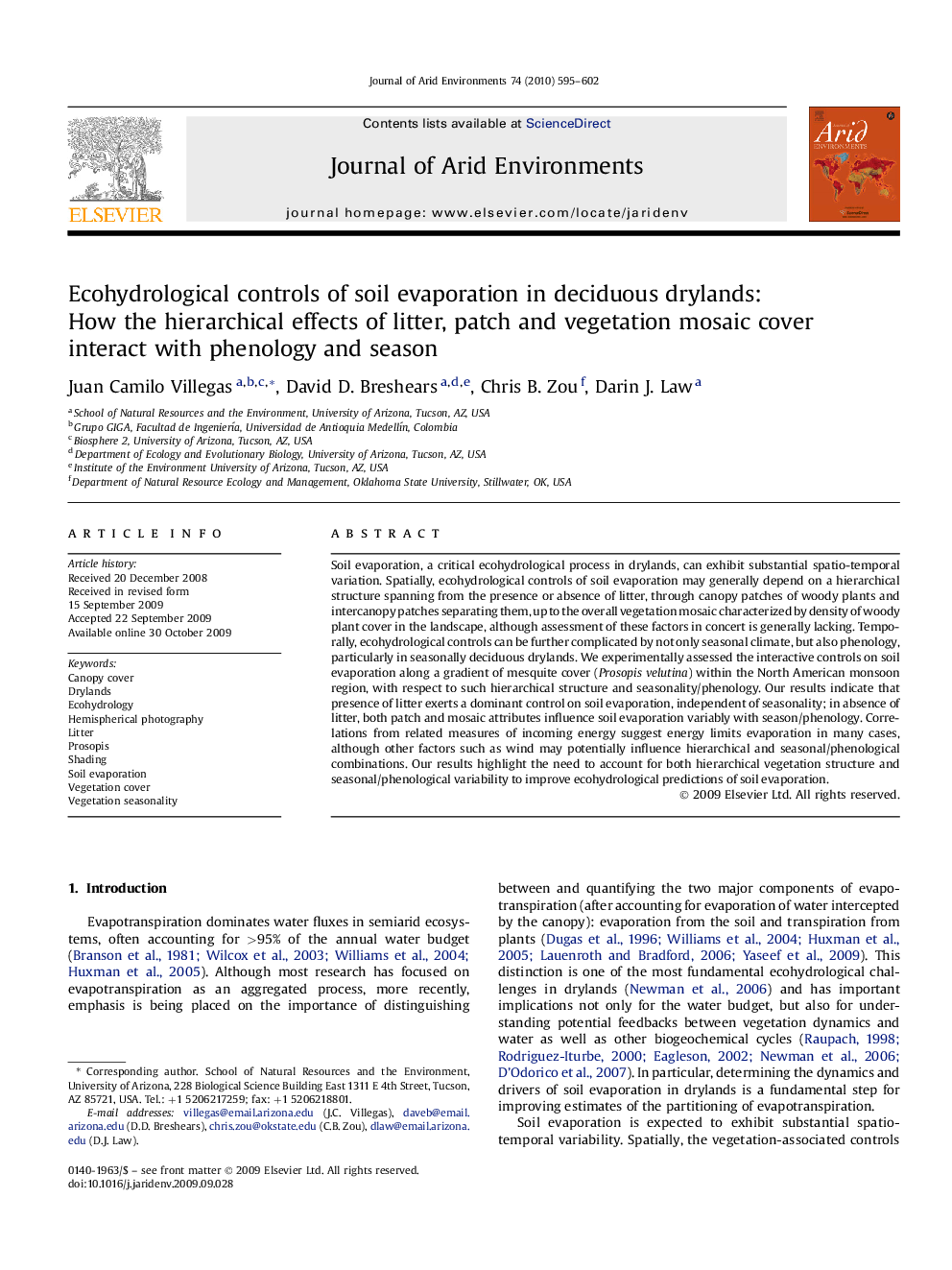| کد مقاله | کد نشریه | سال انتشار | مقاله انگلیسی | نسخه تمام متن |
|---|---|---|---|---|
| 4394234 | 1305525 | 2010 | 8 صفحه PDF | دانلود رایگان |

Soil evaporation, a critical ecohydrological process in drylands, can exhibit substantial spatio-temporal variation. Spatially, ecohydrological controls of soil evaporation may generally depend on a hierarchical structure spanning from the presence or absence of litter, through canopy patches of woody plants and intercanopy patches separating them, up to the overall vegetation mosaic characterized by density of woody plant cover in the landscape, although assessment of these factors in concert is generally lacking. Temporally, ecohydrological controls can be further complicated by not only seasonal climate, but also phenology, particularly in seasonally deciduous drylands. We experimentally assessed the interactive controls on soil evaporation along a gradient of mesquite cover (Prosopis velutina) within the North American monsoon region, with respect to such hierarchical structure and seasonality/phenology. Our results indicate that presence of litter exerts a dominant control on soil evaporation, independent of seasonality; in absence of litter, both patch and mosaic attributes influence soil evaporation variably with season/phenology. Correlations from related measures of incoming energy suggest energy limits evaporation in many cases, although other factors such as wind may potentially influence hierarchical and seasonal/phenological combinations. Our results highlight the need to account for both hierarchical vegetation structure and seasonal/phenological variability to improve ecohydrological predictions of soil evaporation.
Journal: Journal of Arid Environments - Volume 74, Issue 5, May 2010, Pages 595–602